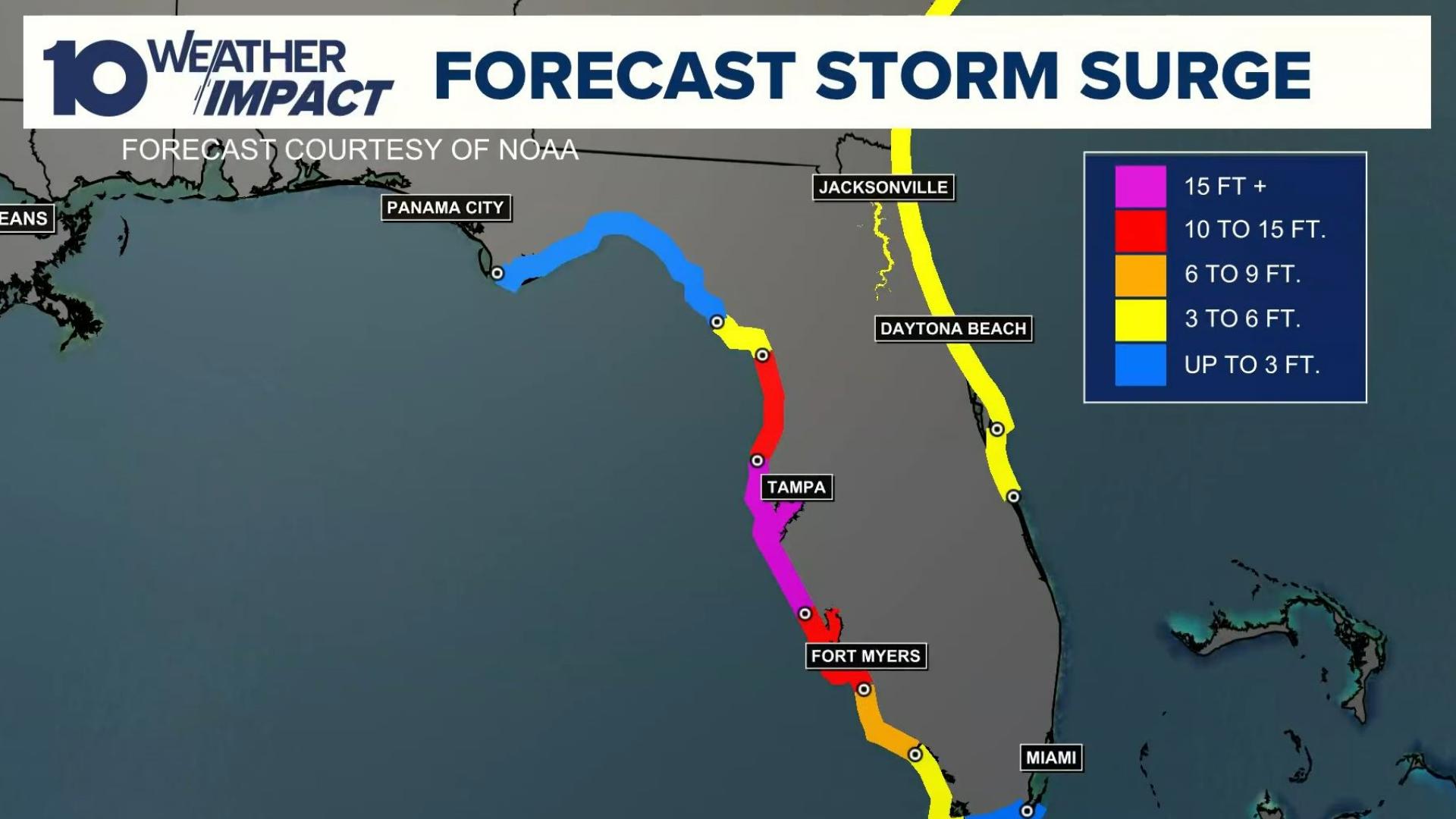COLUMBUS, Ohio — Hurricane Milton is expected to make landfall along Florida’s west coast, either late Wednesday night or early Thursday morning.
Often, people think the wind from hurricanes poses the biggest threat to lives, but flooding from storm surge is the number one cause of death from hurricanes.
The west coast of Florida will see 10-15 feet of storm surge, which is a significant problem considering a lot of Florida’s elevation near the coast is under 15 feet in elevation.
Storm surge is caused by three things.
- The wind produced by the hurricane
- The forward motion of the hurricane
- The change in barometric pressure associated with the hurricane
As hurricanes approach, the wind can push excessive amounts of sea water onto the shore, essentially raising the height of sea level. For example, if an area is 10 feet elevation above sea level and they are expecting 15 feet of storm surge, that location is now essentially 5 feet below sea level.
Storm surge is often worse in the right-front quadrant of a moving hurricane. This is because the forward motion of the storm increases the wind on that side of the hurricane.
It is like those moving walkways at airports. If the moving walkway is moving at 5 mph and you are walking at 7 mph, you are essentially moving at 12 mph. The same rule applies to hurricanes! Only, in the case of Milton, the storm is moving at 8 mph, and the winds are at 155 mph, so winds are blowing at 163 mph on the right side of the storm, which enhances the surge.
Lastly, changes in barometric pressure can enhance storm surge. Hurricanes have very low pressure, and Milton’s pressure fell to 897 mb earlier today. Atmospheric pressure is the weight of the atmosphere on top of you, and when a hurricane approaches with lower atmospheric pressure, it can lead to a localized “bulge” in the water!
The worst of the storm surge will be late Wednesday night into Thursday morning, with improvements by late Thursday morning.

